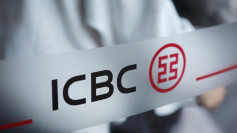For the first time, market officials made loans cheaper after they changed the one-year reference bank rate loans to 4.25% from the previous one-year benchmark lending rate of 4.35% to make China's interest-rates system more compatible with what's happening in the financial market.
The new loan prime rate (LPR) starts at 4.25% from the old one at 4.31%.
The LPR is set every 20th of the month.
To support the economy, lower the cost of borrowing and boost the country's lending activity, from August 20, 2019, new loans will be priced following this LPR. This is in conjunction with the amount the People's Bank of China charges (PBOC) lenders over a year.
PBOC said that this reform is not to replace monetary or other policies but to "repair the channels." The bank will continue working with government ministries in lowering borrowing costs.
Head of Asia macro strategy at Westpac Banking Corp., Frances Cheung said that this is "well within market expectations."
Tommy Xie, an economist at Oversea-Chinese Banking Corp. said that this slow shift in lowering lending rates could have been adapted because a big cut could be damaging to the financial sector.
Likewise, because "this is a long-term structural change, it's not necessary to change the loan prime rate dramatically in the near term," added Xie.
Xie also said that at the end of the day "Banks will try to protect their margins." If the cut is too drastic "they will pay the cost."
The effect on net interest margins will show up in 2020 according to Citigroup Inc. Analysts.
If the LPR is 25 basis points (bps) lower, the net profits that will get cut from banks are around 3.7%.
However, Liu Guoqiang, a deputy governor at the central bank, admitted that this change will have the net interest margins of bank profits hurting in the short-term.
There are some who were hoping that the central bank will do more to lower borrowing costs.
Citic Securities Co., China's largest full-service investment bank, is hoping for a lowering in the rates charged on medium-term lending (MLF) facilities or a reduction in the reserve requirement ratio.
With regards to this ratio, Cheung is thinking of two 50 bps cuts in 2019 and a 5-10 basis point cut in the one-year MLF rate.
David Qu of Bloomberg Economics added that that with the State Council making it easy for smaller companies to borrow money by reducing funding costs by 100 basis points, the reduction of rates by the PBOC for MLFs by 25-50 bps by the end of 2019 is also expected.






